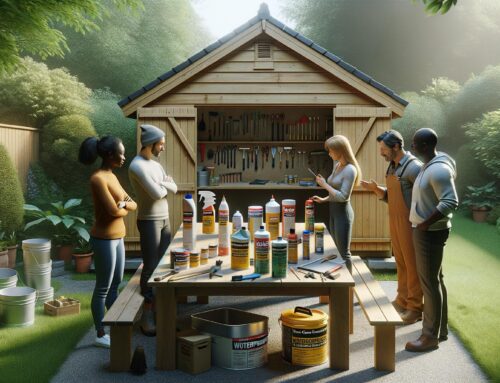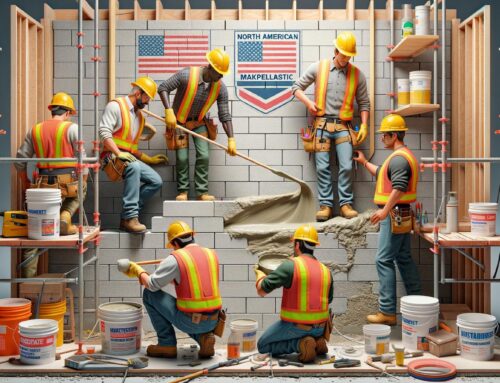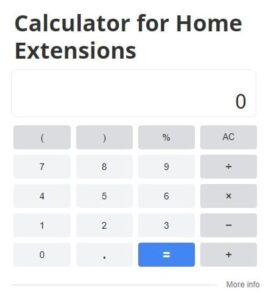
At Home Owners Association, we understand the importance of protecting your property from water damage. Choosing the right rooftop waterproofing membrane is a critical decision for any homeowner.
A high-quality waterproofing solution can safeguard your home against leaks, extend your roof’s lifespan, and potentially save you thousands in repair costs. In this guide, we’ll walk you through the essential factors to consider when selecting the best rooftop waterproofing membrane for your home.
Types of Rooftop Waterproofing Membranes
At Home Owners Association, we understand the importance of protecting your property from water damage. Selecting the right rooftop waterproofing membrane is a critical decision for any homeowner. A high-quality waterproofing solution can safeguard your home against leaks, extend your roof’s lifespan, and potentially save you thousands in repair costs. Let’s explore the main categories of rooftop waterproofing membranes to help you make an informed decision for your home.

Liquid-Applied Membranes
Liquid-applied membranes have gained popularity due to their versatility and ease of application. These membranes form a seamless, monolithic layer when cured. They excel on roofs with complex shapes or numerous penetrations, as they conform to irregular surfaces.
Polyurethane-based liquid membranes offer exceptional elasticity. This coating provides a long-lasting solution to prevent water ingress, with its durability largely resulting from its high tensile strength and elasticity.
The effectiveness of liquid-applied membranes depends on proper application. Thickness control during application is critical, and weather conditions during installation can affect the curing process. For optimal results, professional installation by experienced contractors is recommended.
Sheet Membranes
Sheet membranes are pre-fabricated rolls of waterproofing material applied to the roof surface. These membranes typically consist of materials like modified bitumen, EPDM (Ethylene Propylene Diene Monomer), or TPO (Thermoplastic Polyolefin).
EPDM membranes stand out for their durability and longevity. With proper maintenance, EPDM membranes can last over 30 years. They resist UV radiation well, which makes them an excellent choice for exposed roofing systems.
TPO membranes offer excellent energy efficiency. A study found that reflective coatings applied on switchable roofs improved the percentage savings of annual energy use and cost by up to 6% compared to conventional roofs.
Single-Ply Membranes
Single-ply membranes are factory-manufactured sheet membranes. The most common types include PVC (Polyvinyl Chloride) and the aforementioned TPO. These membranes are typically heat-welded at the seams, which creates a strong, watertight bond.
PVC membranes resist chemicals well and perform well in extreme weather conditions. This makes them ideal for industrial applications or areas with high pollution levels. However, they can cost more than other options.
Single-ply membranes are durable, but they lack redundancy. If a single layer fails, there’s no backup protection. This highlights the importance of regular inspections and maintenance to catch any issues early.
Built-Up Roofing (BUR) Systems
Built-Up Roofing systems consist of multiple layers of bitumen (asphalt) alternated with reinforcing fabric. This creates a redundant waterproofing system that’s highly resistant to punctures and wear.
BUR systems work well for flat or low-slope roofs and can last 20-30 years with proper maintenance. They provide excellent waterproofing and can withstand foot traffic, making them suitable for roofs with frequent access needs.
However, BUR systems are heavy and may require additional structural support. The installation process can be time-consuming and may produce strong odours, which could disrupt building occupants.
The choice of rooftop waterproofing membrane depends on various factors, including your roof’s structure, local climate, and budget. In the next section, we’ll discuss these factors in detail to help you make the best decision for your property.
Factors Influencing Waterproofing Membrane Selection
At Home Owners Association, we understand that choosing the right waterproofing membrane for your rooftop involves careful consideration of several key factors. These elements significantly impact the longevity and effectiveness of a waterproofing solution. Let’s explore the critical aspects that should guide your decision-making process.
Climate and Weather Conditions
The local climate plays a pivotal role in determining the most suitable waterproofing membrane. In areas with high UV exposure (such as much of Australia), UV-resistant membranes are essential. EPDM roofs can last up to 40 years or more when installed by a manufacturer-certified roofer using a fully-adhered application method.

Regions prone to extreme temperature fluctuations require membranes with high elasticity. Polyurethane liquid membranes can stretch up to 280%, accommodating building movements effectively. This flexibility prevents cracks and leaks as the structure expands and contracts with temperature changes.
Rainfall patterns also influence membrane selection. In areas with heavy rainfall (like tropical North Queensland), membranes with superior water resistance and proper drainage systems are paramount. The International Plumbing Code mandates proper design and installation of roof drainage systems to prevent water accumulation and potential structural damage.
Roof Structure and Usage
The slope and structure of your roof significantly impact membrane choice. Flat or low-slope roofs often benefit from liquid-applied membranes, which form a seamless, monolithic layer. These membranes excel at waterproofing roofs with complex shapes or numerous penetrations.
For roofs with moderate to high foot traffic, durability becomes a critical factor. Built-Up Roofing (BUR) systems have proven effective in withstanding regular foot traffic while maintaining their waterproofing integrity. However, they add considerable weight to the roof structure, which may require additional support.
The intended use of the rooftop space also influences membrane selection. If you plan to install solar panels or create a rooftop garden, you’ll need a membrane that can withstand the additional weight and potential root penetration.
Cost Considerations and Longevity
While initial costs are important, it’s essential to consider the long-term value of your waterproofing solution. Higher quality membranes might have a higher upfront cost but can significantly reduce long-term expenses through extended lifespan and reduced maintenance needs.
TPO roofs last between 20 and 30 years, compared to 30 to 40 years for EPDM. Their energy-efficient properties can also lead to substantial savings on cooling costs (some studies show up to 30% reduction in energy use).
Installation complexity is another factor affecting overall cost. Some membranes (like self-adhered bituminous sheets) offer simpler installation processes, potentially reducing labour costs. However, more complex systems like liquid-applied membranes may require specialised skills and equipment, increasing installation expenses.
The choice of waterproofing membrane should balance immediate budget constraints with long-term performance and cost-effectiveness. We recommend consulting with waterproofing specialists to ensure you’re making the most informed decision for your specific situation and budget.
As we move forward, let’s examine the key features that distinguish high-quality waterproofing membranes from their less effective counterparts.
Essential Features of Top-Tier Waterproofing Membranes
At Home Owners Association, we prioritise the selection of high-quality waterproofing membranes for rooftops. The best membranes offer a combination of features that ensure long-lasting protection and performance. We will explore the key characteristics that distinguish superior waterproofing membranes from the rest.

UV Resistance and Durability
UV resistance is an essential feature for exposed rooftop membranes. Prolonged sun exposure can degrade materials, which leads to cracks and leaks. EPDM roofs contain carbon black, which helps them resist UV rays and stay flexible for decades. When you choose a membrane, ask suppliers for specific UV resistance ratings and expected lifespan under local conditions.
Flexibility and Crack-Bridging Ability
A membrane’s ability to stretch and bridge cracks is vital for long-term waterproofing success. Polyurethane liquid membranes can stretch up to 280%, which allows them to accommodate building movements and prevent water ingress. When you evaluate membranes, look for products with high elongation percentages (try to find membranes with at least 150% elongation to ensure adequate flexibility).
Puncture and Tear Resistance
Rooftops face various threats, from falling debris to maintenance foot traffic. The National Roofing Contractors Association found that punctures are a leading cause of membrane failure. TPO membranes offer excellent puncture resistance, with some products withstanding up to 300 pounds of pressure per square inch. When you select a membrane, ask for specific puncture and tear resistance data to match your roof’s exposure level.
Chemical and Environmental Resistance
Your roof may be exposed to industrial pollutants, acid rain, or other chemical agents (depending on your location). PVC membranes are known for their superior chemical resistance, which makes them ideal for industrial areas or regions with high pollution levels. Consider local environmental factors and select a product with proven resistance to relevant chemical exposures.
Fire Safety and Building Code Compliance
Fire resistance is a critical safety feature and often a legal requirement. Look for membranes with Class A fire ratings, which offer the highest level of fire protection. The National Fire Protection Association provides guidelines on fire-resistant roofing materials. Ensure your chosen membrane meets or exceeds local building code requirements for fire safety.
Energy Efficiency and Cool Roof Properties
Energy-efficient membranes can significantly reduce cooling costs. A cool roof is designed to reflect more sunlight than a conventional roof, absorbing less solar energy. This lowers the temperature of the building. Look for products certified by Energy Star or the Cool Roof Rating Council for verified energy-saving properties.
Final Thoughts
Selecting the right rooftop waterproofing membrane impacts the long-term integrity and performance of your property. The ideal solution balances durability, flexibility, and cost-effectiveness while considering local climate, roof structure, and specific performance requirements. UV resistance, crack-bridging ability, and puncture resistance contribute to a membrane’s longevity, while chemical resistance and fire safety properties ensure your roof can withstand environmental challenges.
Professional installation and regular maintenance are essential for the success of any waterproofing system. Improper application can lead to premature failure, regardless of the membrane’s quality. Investing in a high-quality rooftop waterproofing membrane offers significant long-term benefits, including protection from water damage, extended roof lifespan, and potential energy efficiency improvements.
For Melbourne homeowners seeking expert guidance on rooftop waterproofing membranes and other home improvement projects, Home Owners Association offers valuable resources and support. Our team provides personalised advice, access to trade pricing, and knowledge to ensure your home projects meet high standards of quality and efficiency. The best waterproofing solution addresses your specific needs while providing long-lasting protection for your property.





